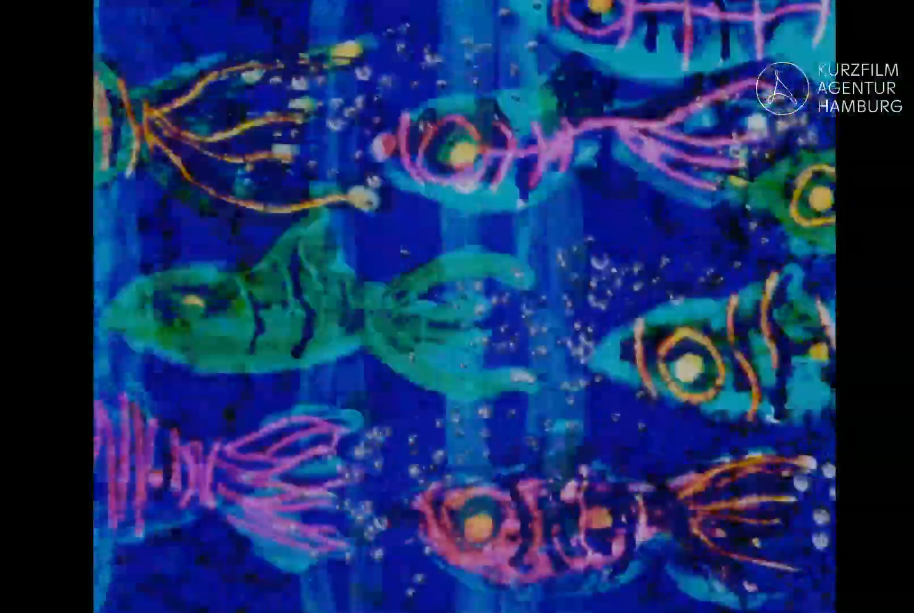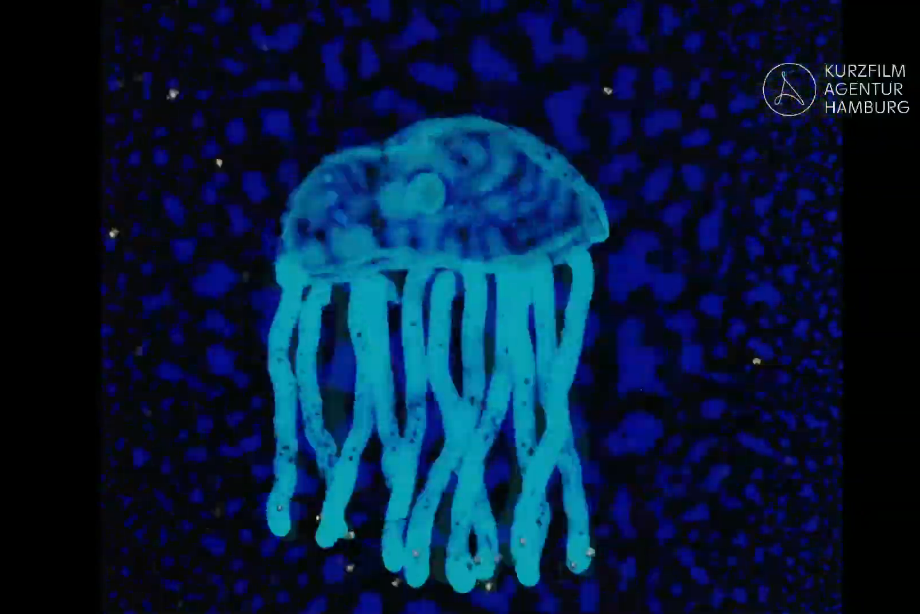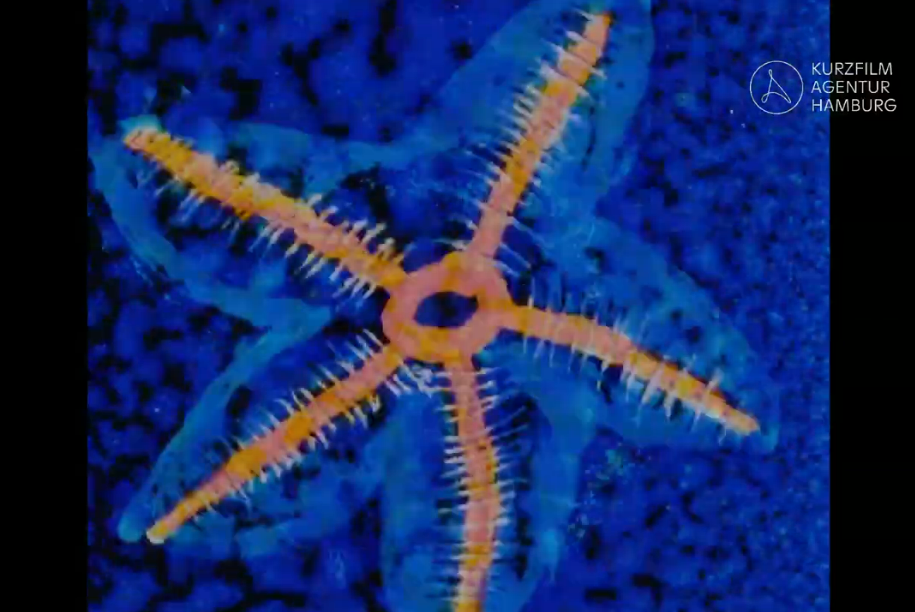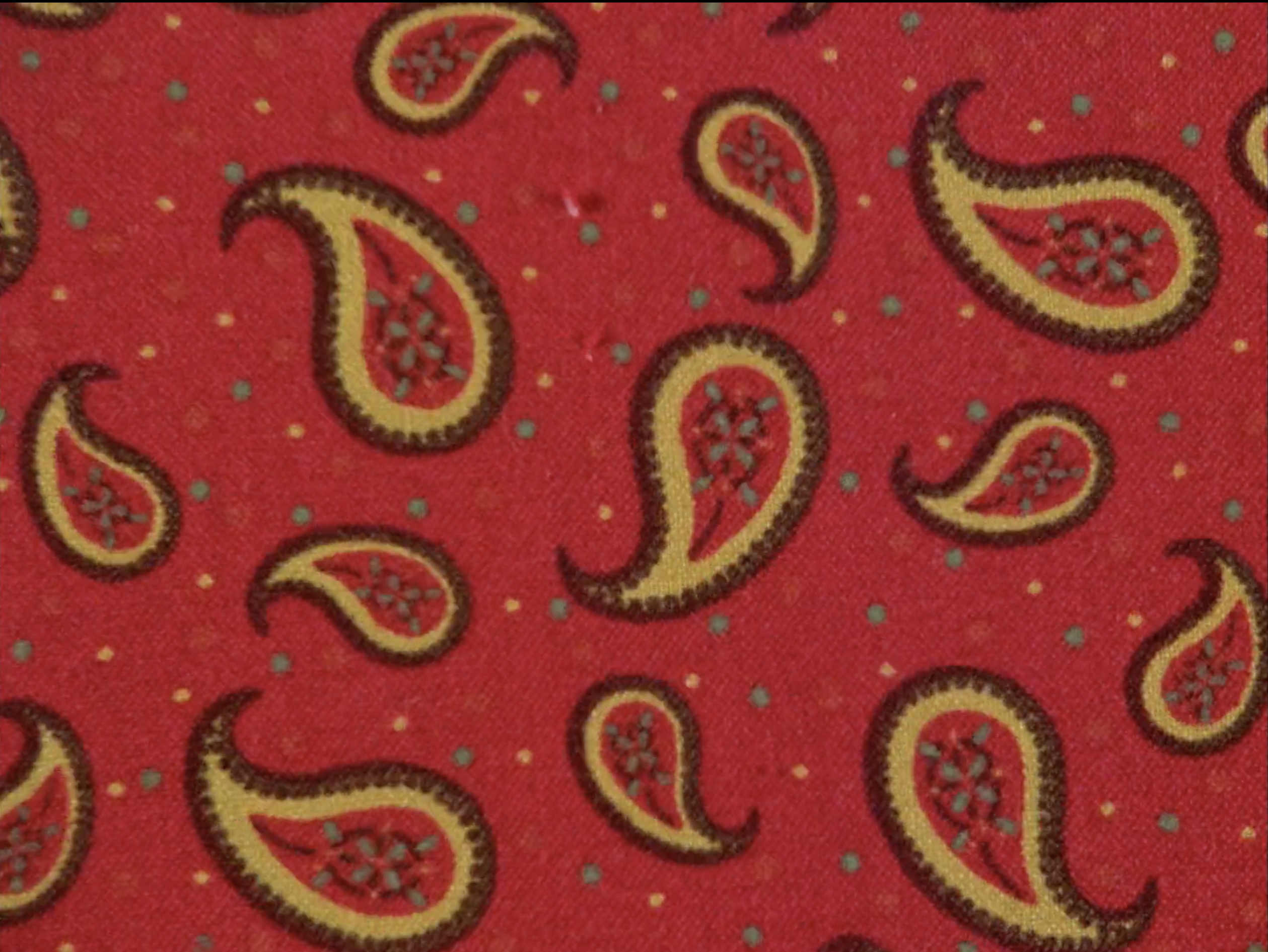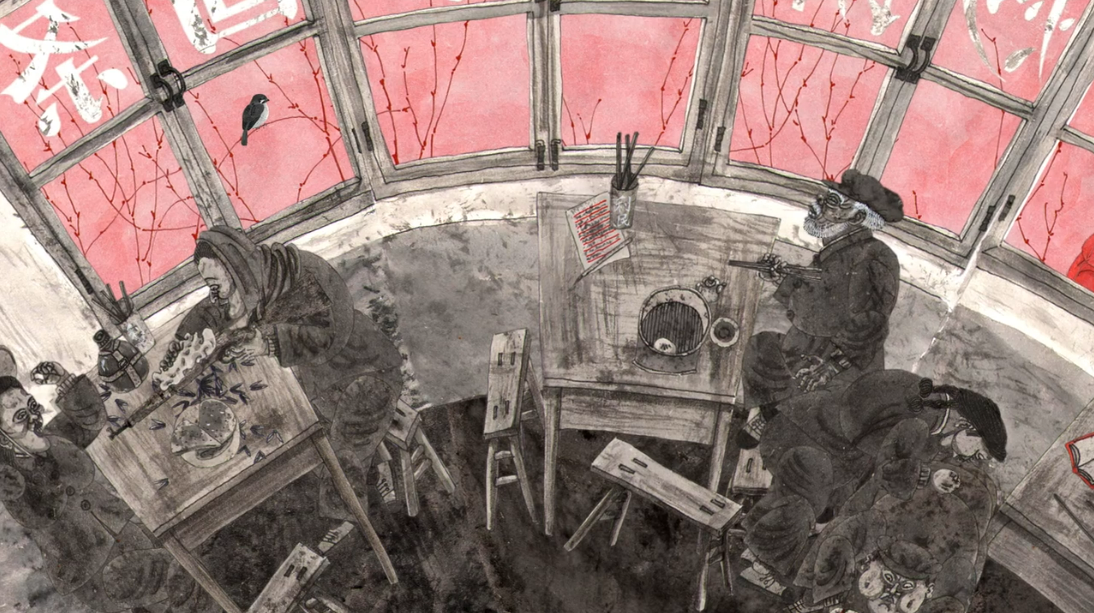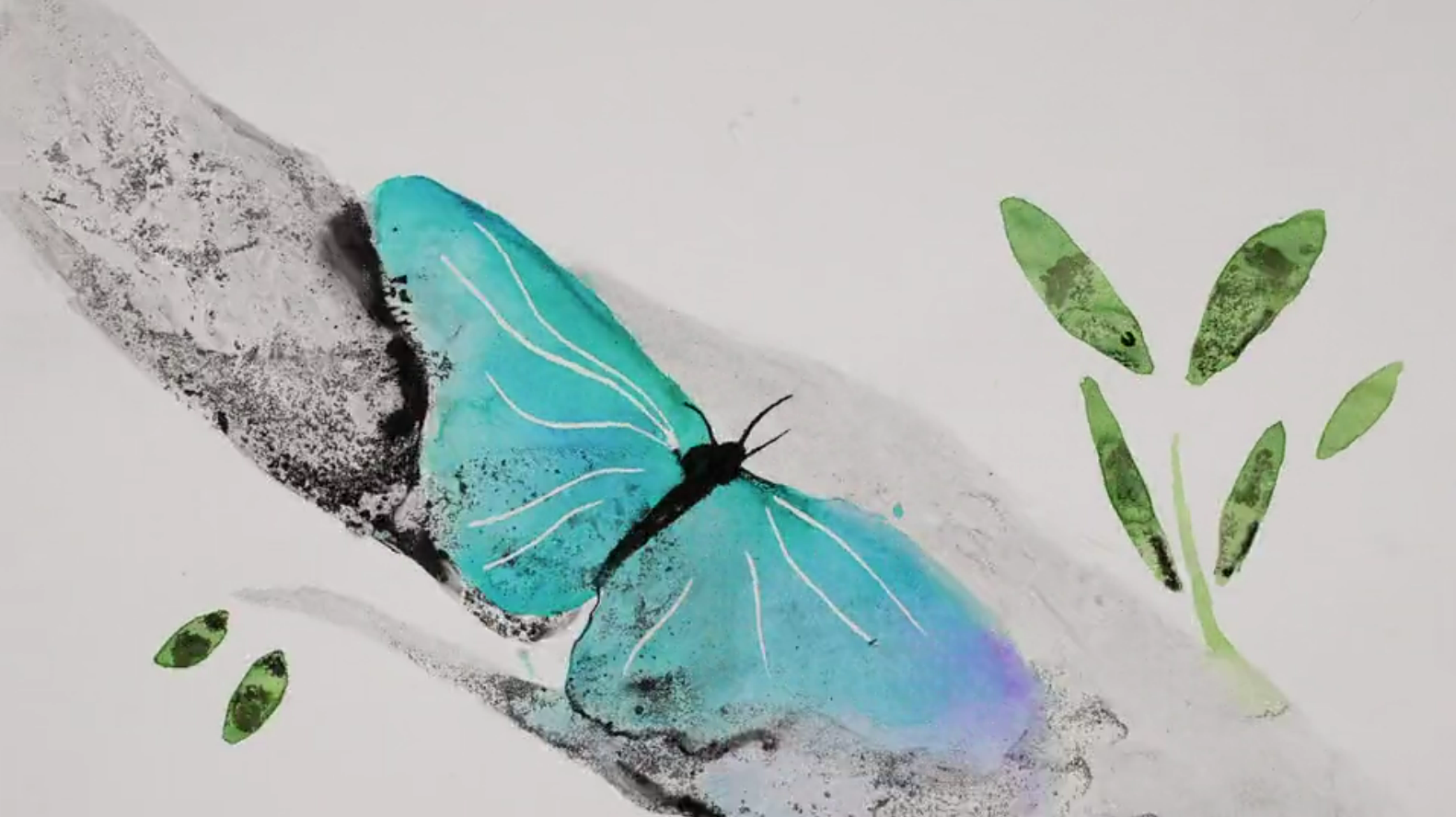
Notes on the film
Sea Song embraces celluloid film as its canvas, continuing a long tradition of direct animation using India inks. Black emulsion of unexposed film is scraped off its celluloid substrate, and the newly transparent areas are coloured with ink. Elsewhere, clear celluloid strips are painted with inks that splinter and crackle on the hard plastic surface. When the film is rephotographed for projection, it lights up like stained glass
Sea Song embraces the liquidity and translucency of ink to depict an aquatic world filled with quivering tentacled organisms. The film’s underwater creatures include mollusks like squids and snails, whose luminous natural inks have been extracted and exploited by humans for centuries. As they wriggle and undulate on screen, the film’s inky lines and scratches leak beyond the boundaries of the frame into a parallel optical soundtrack of crashing waves and bird calls. (text from Alla Gadassik’s essay “Dots, Lines, Washes: Animating Ink”)
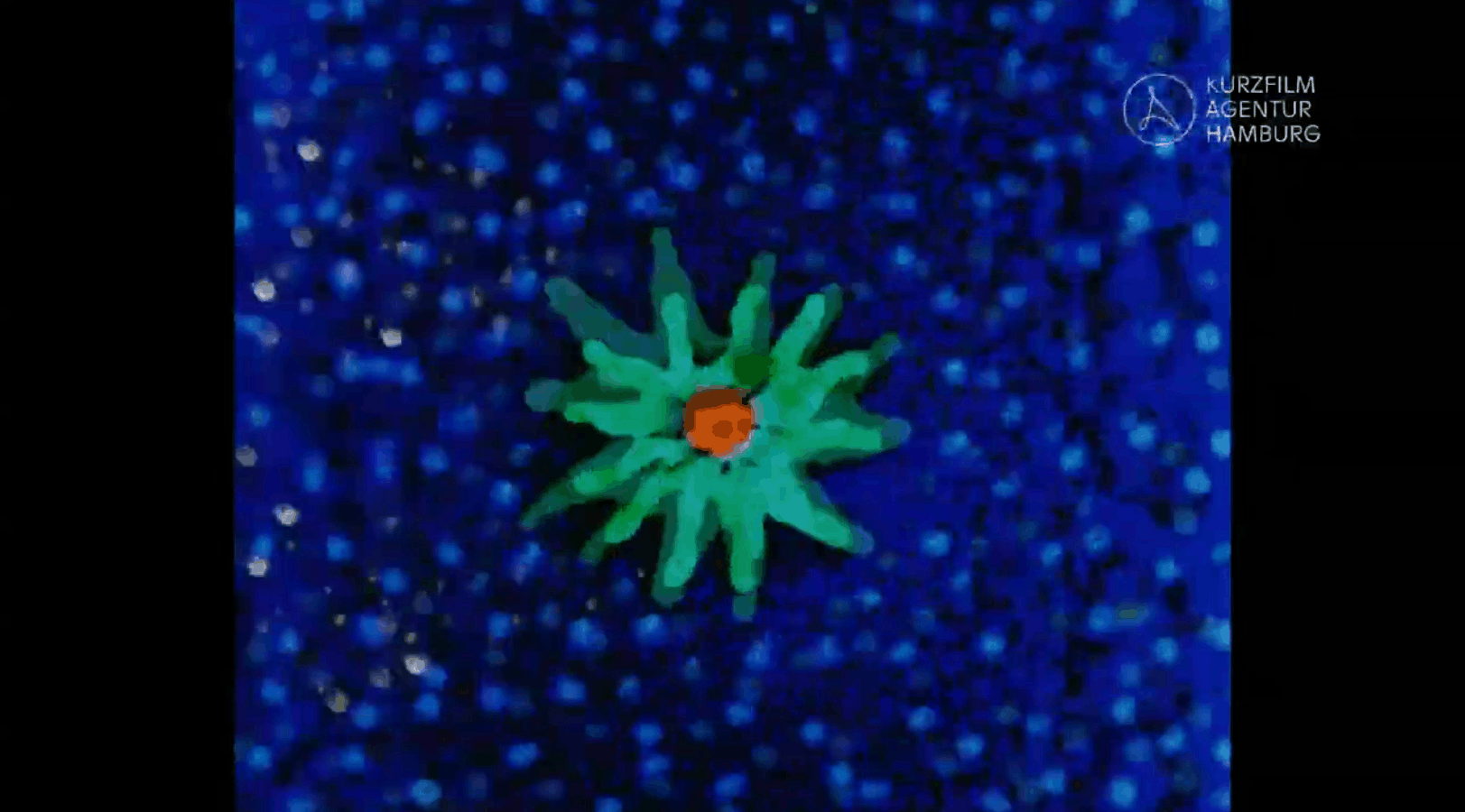
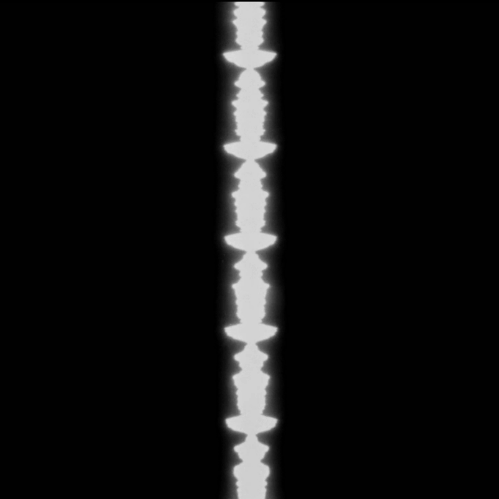
Hand-drawn Sound
To learn more about the process of hand-drawn sound on film, check out this video where filmmaker Norman McLaren explains further about the different techniques used, in an interview uploaded to the NFB site.
learn more
“Dots, Lines, Washes: Animating Ink”
Sea Song, as well as a number of other ink-based films, are discussed in Alla Gadassik’s curatorial essay, Dots, Lines, Washes: Animating Ink, written for the 2023 Ottawa International Animation Festival .
read along